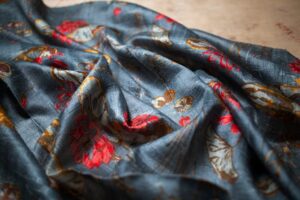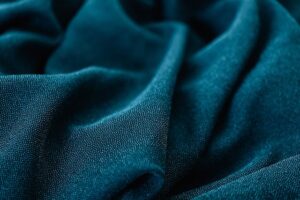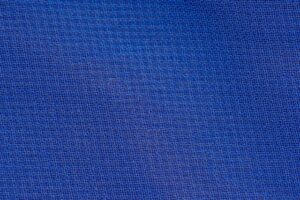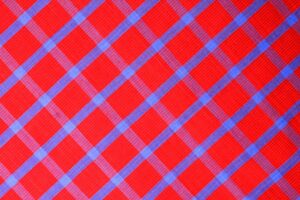What Is GSM In Garments?
Imagine you are standing in front of a clothing rack, trying to choose the perfect fabric for your next sewing project. You come across a label that says “GSM”. Curiosity piqued, you wonder, “What is GSM in garments?” GSM, which stands for Grams per Square Meter, is a term used to measure the weight or thickness of fabrics. It plays a crucial role in determining the quality, durability, and texture of the garment. Whether you’re a fashion enthusiast or a beginner in the world of sewing, understanding GSM can unlock a whole new level of garment selection and design possibilities. So, let’s unravel the mystery behind GSM and discover its significance in the world of fashion!
Definition of GSM
Explanation of GSM
GSM stands for “Grams per Square Meter,” which is a unit of measurement used to determine the weight and density of fabrics and garments. It refers to the weight of a fabric per unit area and is often used as an indicator of fabric quality, performance, and comfort. GSM is an essential metric in the textile and apparel industry as it provides valuable information about the characteristics and suitability of different materials.
Acronym for GSM in garments
In the context of garments, GSM refers to the weight of the fabric used in the construction of a specific item of clothing. It is commonly used by manufacturers, designers, and retailers to describe the thickness, density, and overall feel of a fabric. Garments with a higher GSM tend to be heavier, thicker, and more durable, while those with a lower GSM are generally lighter, thinner, and more breathable.
Importance of GSM in garments
GSM plays a crucial role in the production and selection of fabrics for garments. It is an important factor to consider when determining the quality, comfort, performance, and cost of a garment. By understanding the GSM of different fabrics, manufacturers can make informed decisions about the appropriate materials to use in various types of clothing. Similarly, consumers can use GSM as a guide when choosing garments that meet their specific needs and preferences.

Measurement of GSM
Methods to measure GSM
There are several methods used to measure GSM accurately. One common method is the “weighing method,” which involves weighing a fabric sample of known dimensions and calculating the weight per unit area. Another method is the “sensor-based method,” which uses specialized equipment to measure the pressure or force exerted on a fabric and converts it into a GSM value. These methods can be performed both in a laboratory setting and in the field, allowing for accurate and reliable measurements.
Standard units for measuring GSM
GSM is measured in grams per square meter (g/m²) or ounces per square yard (oz/yd²) depending on the geographical region and industry standards. The metric unit of grams per square meter is more commonly used worldwide, while the imperial unit of ounces per square yard is predominantly used in the United States. Regardless of the unit of measurement, GSM provides a standardized way to compare and evaluate the weight and density of fabrics and garments.
Factors affecting GSM measurement
Several factors can affect the measurement of GSM. These include the type and construction of the fabric, the presence of additional finishes or coatings, the moisture content of the fabric, and any variations in the thickness or density of the material. It is crucial to consider these factors when measuring GSM to ensure accuracy and consistency in comparing different fabrics and garments.

GSM and Fabric Weight
Correlation between GSM and fabric weight
There is a direct correlation between GSM and fabric weight. Generally, fabrics with a higher GSM tend to be heavier, while those with a lower GSM are lighter. This relationship exists because the weight of a fabric is influenced by its density, which is reflected in its GSM value. Fabrics with higher GSM have more fibers per square meter, resulting in increased weight and thickness.
Role of GSM in determining fabric weight
GSM is a crucial factor in determining fabric weight as it provides a quantitative measure of the amount of material used in a given area. It enables manufacturers and designers to select fabrics of the desired weight and thickness for specific garments. For example, heavy winter coats and blankets often require fabrics with high GSM to provide adequate insulation and warmth, while lightweight summer dresses may utilize fabrics with lower GSM for breathability and comfort.
Effects of high and low GSM on fabric weight
Fabrics with high GSM are generally thicker, denser, and more substantial. They have a heavier weight, which can provide warmth, durability, and resistance to wear and tear. However, high GSM fabrics may also be less breathable and more restrictive in movement. On the other hand, fabrics with low GSM are lighter, thinner, and more breathable, making them suitable for garments that require comfort, flexibility, and breathability. However, they may be less durable and offer less insulation.
GSM and Fabric Quality
Impact of GSM on fabric quality
GSM has a significant impact on fabric quality. Fabrics with higher GSM often indicate a higher quality and better durability. They are usually more resistant to pilling, tearing, and fraying. High GSM fabrics tend to be denser and have a tighter weave or knit structure, resulting in increased strength and longevity. On the other hand, fabrics with lower GSM may be more prone to stretching, snagging, and showing signs of wear and tear.
Relationship between GSM and fabric characteristics
The GSM of a fabric is closely related to its inherent characteristics. Fabrics with higher GSM exhibit greater opacity, better coverage, and enhanced structure. They are often used for heavy-duty garments, such as denim jeans and upholstery fabrics, where strength and durability are paramount. In contrast, fabrics with lower GSM offer increased transparency, breathability, and a lightweight feel, making them suitable for delicate garments such as lingerie or summer dresses.
Determining fabric texture based on GSM
GSM also influences the texture and feel of a fabric. Fabrics with high GSM tend to have a denser, more substantial feel with a smooth or textured surface. They may offer a luxurious or cozy sensation when in contact with the skin. In contrast, low GSM fabrics often have a lighter, softer texture, providing a more delicate and airy feel. The choice of GSM can significantly impact the tactile experience and overall satisfaction with a garment.

GSM and Fabric Performance
Influence of GSM on fabric performance
GSM plays a vital role in determining the performance characteristics of a fabric. Fabrics with higher GSM generally exhibit better strength, abrasion resistance, and dimensional stability. They are more likely to maintain their shape, structure, and appearance over time. High GSM fabrics also tend to offer better insulation, making them suitable for cold and harsh climates. Conversely, fabrics with lower GSM provide increased breathability, flexibility, and ease of movement, making them ideal for active wear and summer garments.
Effects of GSM on fabric durability
GSM directly impacts fabric durability. Fabrics with higher GSM are often more resistant to wear, tearing, and abrasion due to their denser structure and increased fiber content. These fabrics are capable of withstanding repeated use, laundering, and mechanical stress without significant damage. In contrast, fabrics with lower GSM may be more prone to stretching, pilling, and developing holes or snags. Choosing the appropriate GSM is essential to ensure the durability and longevity of a garment.
GSM’s role in determining fabric performance in different environments
The choice of GSM can significantly affect fabric performance in different environments. For example, garments intended for cold weather conditions may require higher GSM fabrics to provide adequate warmth and insulation. On the other hand, garments designed for hot and humid climates would benefit from lower GSM fabrics to enhance breathability and moisture-wicking properties. By considering the intended use and environmental factors, manufacturers and designers can select the appropriate GSM to optimize fabric performance.
GSM and Garment Comfort
Impact of GSM on garment comfort
GSM has a direct impact on the comfort of garments. Fabrics with higher GSM often provide a sense of solidity, warmth, and coziness, making them suitable for winterwear and cold climates. However, they may also be less breathable and more restrictive, which can hinder comfort in certain situations. Fabrics with lower GSM, on the other hand, offer increased breathability, lightness, and flexibility, resulting in enhanced comfort especially in warm weather or during physical activity.
GSM’s relation to breathability of garments
The breathability of a garment is influenced by its GSM. Fabrics with higher GSM tend to have a denser and less porous structure, restricting airflow and ventilation. This can lead to increased heat retention and discomfort, particularly in hot and humid conditions. Fabrics with lower GSM allow for better air circulation and moisture evaporation, leading to improved breathability and enhanced comfort. Selecting the appropriate GSM is crucial to ensure optimal breathability and comfort of a garment.
Determining appropriate GSM for specific garment types
Different garment types require specific GSM values to balance comfort and functionality. For example, heavy winter coats and blankets typically require higher GSM fabrics to provide insulation and warmth, while lightweight summer dresses and activewear may benefit from fabrics with lower GSM to enhance breathability and flexibility. It is essential to consider the intended use, climate, and wearer’s comfort preferences when determining the appropriate GSM for different garment types.

GSM and Printing/Embroidery
Effect of GSM on print/embroidery quality
GSM significantly influences the quality of printing and embroidery on garments. Fabrics with higher GSM provide a stable and dense base for prints and embroidery, resulting in vibrant colors, sharp detailing, and excellent coverage. These fabrics are better able to withstand the process of printing or embroidery without distorting or puckering. In contrast, fabrics with lower GSM may be more prone to losing shape or distorting during printing or embroidery, potentially compromising the quality of the final design.
Optimal GSM for various printing/embroidery techniques
Different printing and embroidery techniques require specific GSM values for optimal results. For example, screen printing on fabric typically requires higher GSM to ensure proper ink absorption and prevent bleeding or smudging. Embroidery, on the other hand, can be done on a wide range of GSM fabrics, but higher GSM often provides a sturdier base for intricate stitching. Understanding the requirements of specific techniques and selecting the appropriate GSM is essential to achieve the desired print or embroidery quality.
Considerations for GSM when planning printing/embroidery on garments
When planning printing or embroidery on garments, GSM should be a crucial consideration. It is essential to select fabrics with suitable GSM to ensure optimal printing or embroidery results, durability, and adherence. Fabrics with higher GSM offer better stability and resilience, making them more suitable for complex or detailed designs, while fabrics with lower GSM may be more suitable for delicate or lightweight designs. By considering GSM during the planning stage, printing and embroidery outcomes can be enhanced.
GSM and Cost
Relationship between GSM and fabric cost
GSM has a direct relationship with fabric cost. Generally, fabrics with higher GSM require more raw materials, involve more intricate manufacturing processes, and may have additional finishes or treatments. Consequently, fabrics with higher GSM tend to be more expensive compared to fabrics with lower GSM. The cost of the fabric is often reflected in the retail price of garments, making GSM an important factor to consider when balancing cost and quality.
Balancing GSM and cost considerations
Balancing GSM and cost considerations is crucial in the garment manufacturing process. While high GSM fabrics may offer superior quality and durability, they may be more expensive to produce and result in higher garment costs. Manufacturers must evaluate the desired quality, performance, and market price of the final garment when selecting the appropriate GSM. By carefully balancing these factors, manufacturers can optimize garment cost without compromising on essential attributes.
Factors influencing fabric cost based on GSM
Several factors influence fabric cost based on GSM. These include the raw material cost, production complexity, finishing treatments, and manufacturing efficiency. Fabrics with higher GSM typically require a higher quantity of raw materials, which can contribute to increased costs. Additionally, the process of manufacturing high GSM fabrics may involve more intricate machinery, longer production times, and specific finishing treatments, all of which can impact the overall cost of the fabric.

GSM and Sustainability
GSM’s impact on environmental sustainability
GSM has a significant impact on environmental sustainability. Fabrics with higher GSM often require more raw materials and energy-intensive processes to manufacture. This can result in increased resource consumption, waste generation, and carbon emissions. Fabrics with lower GSM, on the other hand, generally require fewer resources and energy during production, reducing their environmental footprint. Selecting lower GSM fabrics can contribute to the overall sustainability of the textile and apparel industry.
Optimizing GSM to reduce resource consumption
Optimizing GSM is an effective strategy to reduce resource consumption in the textile industry. By selecting fabrics with lower GSM, manufacturers can minimize their reliance on raw materials, energy, and water, leading to environmental conservation. Additionally, by adopting efficient production techniques and optimizing processes, manufacturers can reduce waste generation and improve the overall sustainability of the textile supply chain. Optimizing GSM is a valuable approach to support eco-friendly practices.
GSM’s role in creating sustainable garments
GSM plays a crucial role in creating sustainable garments. By selecting fabrics with lower GSM, manufacturers can develop garments that are lighter, more breathable, and require fewer resources to produce. These garments often have a reduced environmental impact throughout their lifecycle, from production to disposal. Furthermore, lower GSM fabrics can contribute to the trend of eco-conscious fashion by offering comfortable, durable, and ethically produced garments that align with consumer demands for sustainable choices.
Choosing the Right GSM
Factors to consider when selecting GSM
When selecting the right GSM for a garment, several factors should be considered. These include the intended use and climate of the garment, the desired comfort level, the durability requirements, the printing or embroidery plans, and the target price point. By evaluating these factors, manufacturers and designers can determine the ideal GSM that balances all considerations and meets the specific needs and preferences of the target market.
Guidelines for choosing appropriate GSM for different garments
Guidelines can be helpful when choosing the appropriate GSM for different garments. For heavy or insulated garments, such as jackets or blankets, higher GSM fabrics are generally recommended to provide warmth and durability. Lightweight and breathable garments, such as t-shirts or summer dresses, benefit from lower GSM fabrics to enhance comfort and cooling properties. By understanding the requirements of different garment types, appropriate GSM ranges can be established as a starting point for fabric selection.
Balancing factors like cost, comfort, quality, and performance when deciding GSM
When deciding on the GSM for a garment, it is crucial to balance factors such as cost, comfort, quality, and performance. While higher GSM fabrics may offer better quality and durability, they may also be more expensive and less breathable. Lower GSM fabrics may be more cost-effective and comfortable, but they may be less durable and provide less insulation. By carefully considering these factors and their relative importance, manufacturers and designers can select the optimal GSM that meets all requirements.


